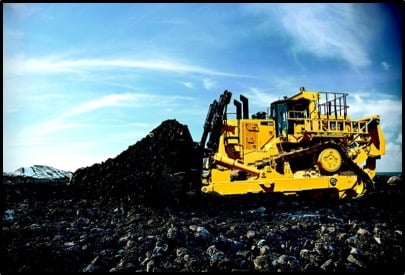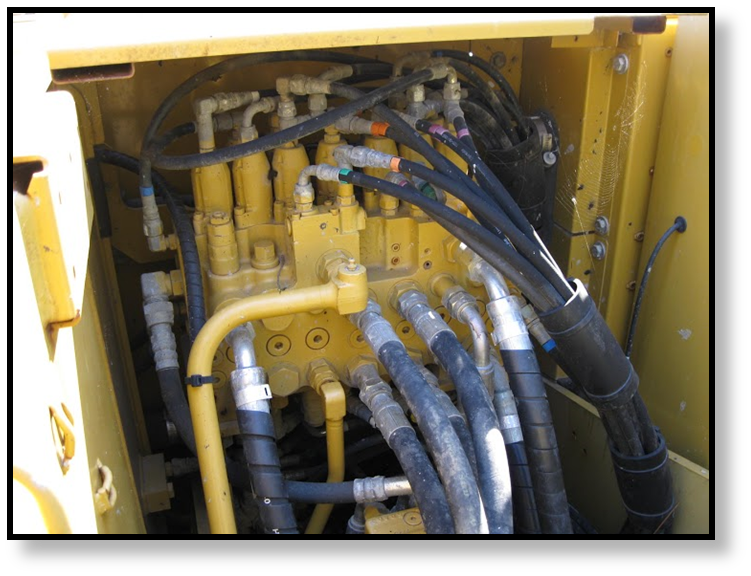
There is a big difference between replacing hydraulic fluid and flushing the system. Replacing hydraulic fluid only involves draining old fluid and adding new fluid; flushing the entire system is much more thorough, and aids in eliminating both contaminants and old fluid. In an ideal world, fluid would only ever need to be replaced. However, there are situations in which the hydraulic system really needs to be flushed. In this Shop Talk Blog post, we will discuss the why and how of flushing the hydraulic system on your construction equipment.
Goal of a Hydraulic Flush
A hydraulic flush purges the system of sludge, contaminants (including water, air, and particulate matter), and degraded fluid. A flush should not be necessary for a machine that has been regularly maintained and has not experienced any major failures or contamination. In such cases, draining and adding fresh hydraulic fluid as needed should be fine.

Situations In Which You Should Flush Your Hydraulic System
There are several situations in which a hydraulic system flush is a good idea. If the equipment is new or has been recently overhauled, it is wise to flush your system to purge out any built-in contamination. This is also true for equipment that has not been used for an extended period of time. If a system experiences a major failure, it should be flushed. This is especially true if that failure involved a filter or contamination. If the hydraulic fluid has degraded or formed sludge, then the system should be flushed. Another potential reason for performing a hydraulic flush is to prepare the machine for a new type of hydraulic fluid. Combining different types of hydraulic fluids is not advisable because their additives may not be compatible.
Double Oil and Filter Change Flush
There are many different types of flushing techniques, but one that many experts recommend is the "double oil and filter change." Here is an excellent summary of that process from Hydraulics & Pneumatics:
A double oil and filter change involves an initial oil drain and filter change, which expels a large percentage of contaminants and degraded fluid. The system is then filled to the minimum level required and the fluid circulated until operating temperature is reached and the fluid has been turned over at least five times. The oil [hydraulic fluid] is then drained and the filters changed a second time.

Drain the system only after the existing fluid has reached a normal operating temperature. Draining includes the reservoir as well as accumulators, cylinders, filter housings, lines, and any other areas where hydraulic fluid accumulates. Afterward, clean the reservoir with a lint free rag to remove all sludge and deposits.
Other methods of flushing include power flushes or high velocity flushes (which require a flushing rig) and chemical power flushes. However, the double oil and filter change seems to be the best option for those without access to a power flushing rig.
Conclusion
Contaminants and degraded fluid will negatively impact system performance. If you suspect that your hydraulic system has been compromised through contamination or system failure, perform a double oil and filter flush -- especially if you have had to fix a final drive after a catastrophic failure.
Here are a few more posts you might find interesting ...
- Hydraulic Contamination Issues in Newer Machines
- Common Hydraulic Fluid Issues
- Hydraulic Fluid Questions for Newbies
Texas Final Drive is your partner in providing new or remanufactured final drive hydraulic motors from a single mini-excavator to a fleet of heavy equipment. Call today so we can find the right final drive or hydraulic component for you, or check out our online store to find your O.E.M. manufacturer brand motor now.
